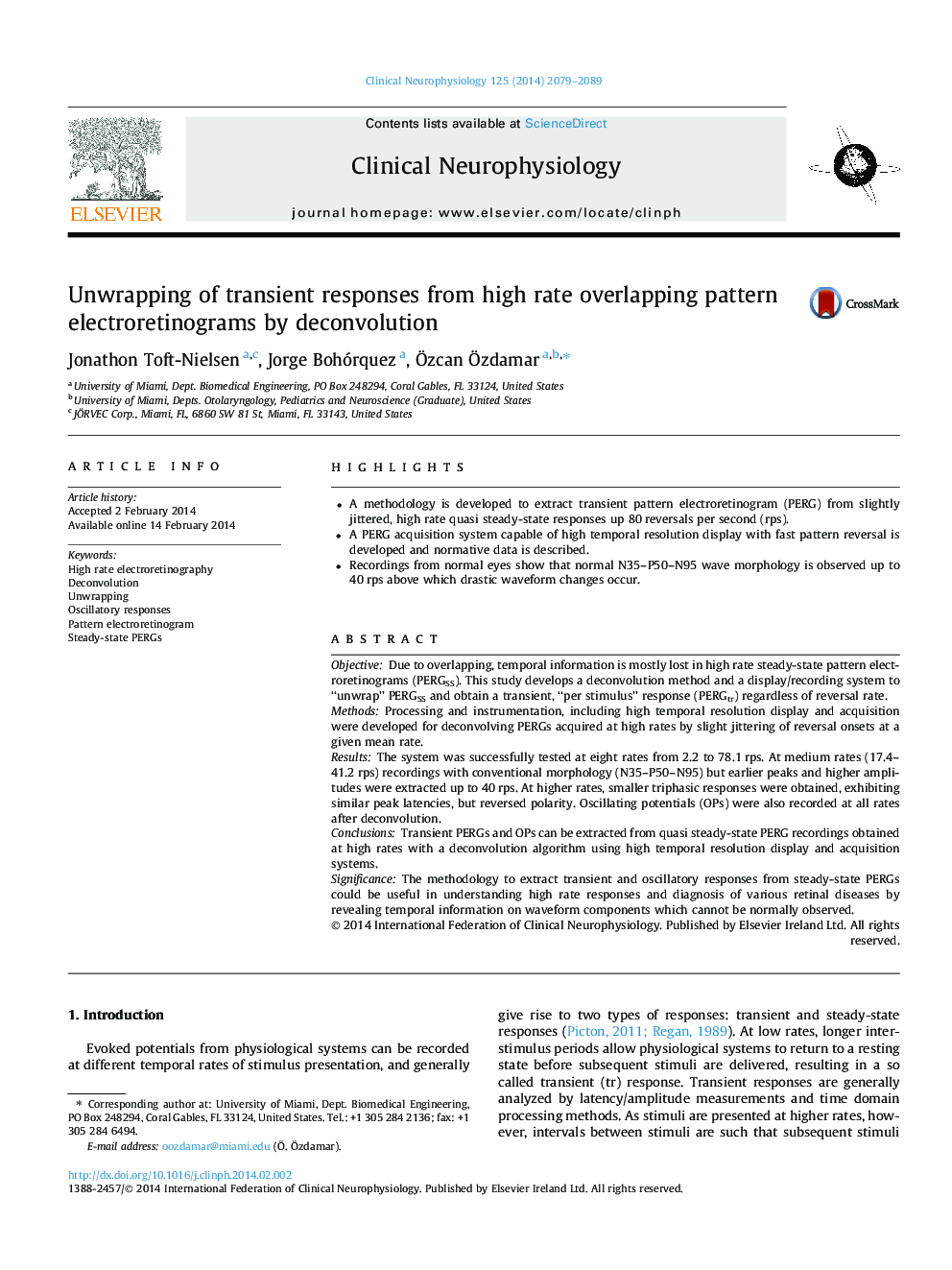| Article ID | Journal | Published Year | Pages | File Type |
|---|---|---|---|---|
| 3042709 | Clinical Neurophysiology | 2014 | 11 Pages |
•A methodology is developed to extract transient pattern electroretinogram (PERG) from slightly jittered, high rate quasi steady-state responses up 80 reversals per second (rps).•A PERG acquisition system capable of high temporal resolution display with fast pattern reversal is developed and normative data is described.•Recordings from normal eyes show that normal N35–P50–N95 wave morphology is observed up to 40 rps above which drastic waveform changes occur.
ObjectiveDue to overlapping, temporal information is mostly lost in high rate steady-state pattern electroretinograms (PERGSS). This study develops a deconvolution method and a display/recording system to “unwrap” PERGSS and obtain a transient, “per stimulus” response (PERGtr) regardless of reversal rate.MethodsProcessing and instrumentation, including high temporal resolution display and acquisition were developed for deconvolving PERGs acquired at high rates by slight jittering of reversal onsets at a given mean rate.ResultsThe system was successfully tested at eight rates from 2.2 to 78.1 rps. At medium rates (17.4–41.2 rps) recordings with conventional morphology (N35–P50–N95) but earlier peaks and higher amplitudes were extracted up to 40 rps. At higher rates, smaller triphasic responses were obtained, exhibiting similar peak latencies, but reversed polarity. Oscillating potentials (OPs) were also recorded at all rates after deconvolution.ConclusionsTransient PERGs and OPs can be extracted from quasi steady-state PERG recordings obtained at high rates with a deconvolution algorithm using high temporal resolution display and acquisition systems.SignificanceThe methodology to extract transient and oscillatory responses from steady-state PERGs could be useful in understanding high rate responses and diagnosis of various retinal diseases by revealing temporal information on waveform components which cannot be normally observed.
